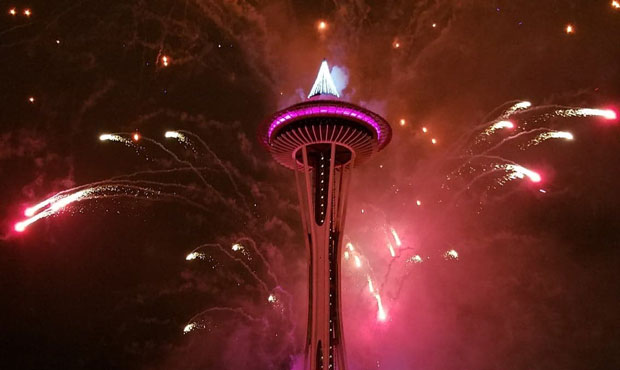What happened to crime under Washington’s legal marijuana?
Oct 23, 2019, 5:10 AM
Here’s the situation: An officer pulls over a driver. They are suspicious that the driver is impaired and they have a DUI on their hands. Specifically, a marijuana DUI.
But proving this is not as simple as breath test, or asking if their names are Cheech, Chong, or Lebowski. Washington state has a 5 nanogram limit, which is determined through a blood test. It’s similar to blowing a .08 on a breath test for alcohol.
“We mostly interviewed law enforcement officers, but we also interviewed prosecutors throughout the state,” said Washington State University Professor Dale Willits. “Some of them, not all of them, but some of them express dismay at the nanogram limit, because now they will go to trial and juries will expect to see this 5 nanogram blood test. But blood tests aren’t ordered for each DUI stop.”
WSU Study: Fewer Washington teens using marijuana post legalization
Not only that, there is a time limit to the test. If a driver refuses to take one, then the cops have to wait for a judge to issue a warrant, and then there’s the trip to the hospital for the blood draw. It all takes time, during which the level of marijuana in the driver’s blood can go down. And who knows if it was high enough for a conviction earlier?
This is why there is a looming snafu with Washington’s DUI laws when it comes to marijuana. Willits uncovered the issue during a study for WSU, which largely looked at crime rates under legal marijuana.
Washington’s DUI law not only states a 5 nanogram limit. It also cites that “evidence of impairment” can be used in a DUI case.
“What we are hearing is that this nanogram limit is pulling people away from evidence of impairment and people want to simplify it, that they either tested above or below this limit,” Willits said.
“Both the AAA foundation and the National Highway Traffic Safety Administration … put out reports stating that there really isn’t a scientific basis for this 5 nanogram limit,” he continued. “And yet a lot of states, Washington included, have adopted them as our baseline.”
Willits notes that marijuana is not processed in the body the same way alcohol is. So using methods common for alcohol may not be appropriate for cannabis.
WSU continues to pursue grants to develop a more efficient and accurate roadside test for marijuana DUIs.
Marijuana and crime
The WSU study considered Washington and Colorado, as well as control states – 21 states that did not legalize recreational or medical marijuana.
“What we found essentially was that there was really no difference between Washington, Colorado and these states,” Willits said. “There are caveats – we only looked at certain types of crime and marijuana has only been legal for a certain amount of time. But overall, we didn’t find any consistent pattern of crime increasing or decreasing compared to the control states.”
Of course, there was a decrease in marijuana arrests in the legal states. But WSU’s study focuses on index crimes as defined by the FBI — homicides, aggravated assault, robbery, larceny, and motor vehicle theft.
Willits also points out that one of the arguments for legalizing marijuana was that it would knock down the illegal market for the drug. Why would you use a dealer when you can just go to the store?
“What we’ve heard from law enforcement and what we’ve seen in our data is that this market is still around,” he said. “So we are hoping to secure funding to better understand the black market in the context of legalization.”














